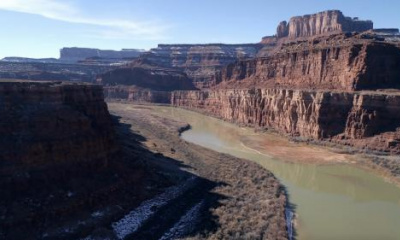Union Pacific’s Great Salt Lake Causeway is a 20-mile railroad crossing that physically separates the lake into North and South arms. The only opening in the causeway is a 160 ft wide gap called the West Crack Breach. Brian Crookston, an Assistant Professor in USU’s Civil and Environmental Engineering Department, studies fluid dynamics at the breach.
“So the northern part of the lake doesn't receive any freshwater. In the southern part is where we have our rivers that provide flows into the Great Salt Lake. Knowing how the flow behaves through that opening, one reason that's so important, is if there's less saline water in the south, how much of that do we let move north? And then how much of the salty water do we let move south trying to keep everything in balance,” Crookston said.
The lake has a number of stakeholders—which include the mineral industry, the brine shrimp industry, and conservation efforts. Crookston says his work at the breach is aimed at supporting the Utah Department of Natural Resources in their effort to manage the lake’s salinity and to balance the needs of the various stakeholders.
Using on-site field data, Crookston and his team developed a computer model that simulates fluid flow through the breach. They then made structural modifications to the computer model’s breach to simulate how these changes might affect water flow. One such modification was height adjustment to the berm, a mound of rock that sits on the lakebed underneath the breach.
“So what we saw with our model predictions is that if we raise the berm, then it would reduce flows, and it would reduce flows in the way that seems to matter most and that's reducing the amount of high saline water,” Crookston said.
Based on this model Crookston and his team recommended that the State of Utah raise the berm by four feet. Following this recommendation adjustments were implemented by the State this summer. Though Crookston said his team is still in the process of collecting confirmatory data it appears that the raised berm is slowing North to South flow as the computer model predicted.

.jpg)






